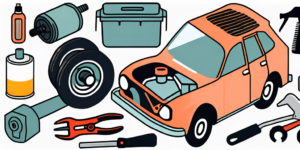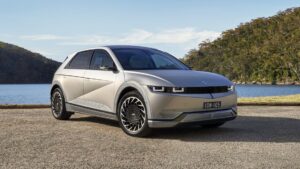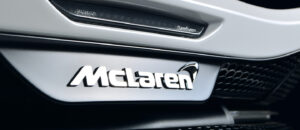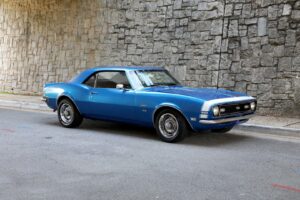Volkswagen Beetle: The Love Bug’s Influence on Pop Culture
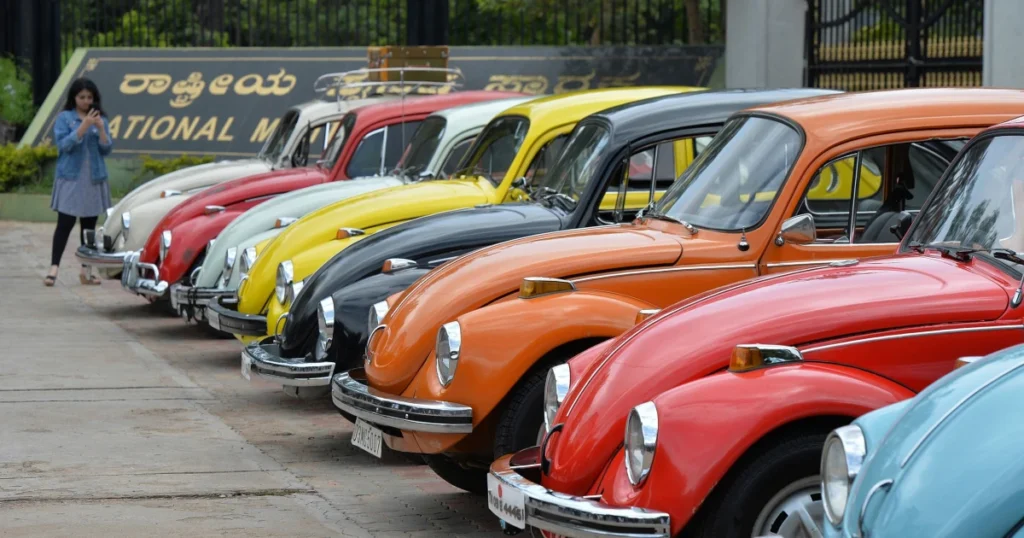
The Volkswagen Beetle, affectionately known as the Love Bug, occupies a unique and cherished place in the annals of pop culture. Girls are especially delighted by the charm of this fine car, and a lot of cosmetic packaging is inspired by its design. This iconic automobile, with its unmistakable rounded shape and endearing personality, has transcended its original purpose of transportation to become a symbol of innovation, individuality, and enduring charm. In this comprehensive exploration, we delve into the multifaceted influence of the Volkswagen Beetle on various aspects of pop culture, from its revolutionary design to its cinematic and artistic impact.
If you are a big Volkswagen Beetle enthusiast, you can purchase men’s hoodies with amazing depictions of this very special car!
The Beetle’s Enduring Design
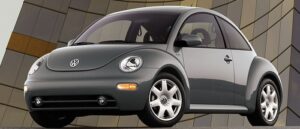
The Beetle’s design stands as a testament to the power of simplicity and forward-thinking engineering. Conceived by Ferdinand Porsche, its unconventional yet functional aesthetic challenged the norms of automobile design in its era. Its distinctive rounded shape and bulbous form were a stark departure from the prevailing trends, making the Beetle not just a car but a work of art in motion. This design, which may have seemed unorthodox at the time, became a pioneering force, shaping the future of automotive design and captivating the hearts of those who appreciated its uniqueness.
However, the Beetle’s design story goes beyond aesthetics; it is deeply intertwined with the counterculture movements of the 1960s. The car’s distinctive appearance symbolized a break from the status quo, appealing to those who sought an alternative, free-spirited lifestyle. It influenced change both in the world of industry and in interior aesthetics and home remodeling. Whether it was adopted by the flower-power-loving hippies, avant-garde artists, or carefree surfers, the Beetle’s adaptability and universal charm made it a symbol of rebellion and individuality. Its appeal extended far beyond a mode of transport; it became a statement of identity and a vehicle for self-expression.
Despite the ever-evolving landscape of automotive technology, the Beetle’s design legacy endures, a constant reminder that innovation need not be complex to be revolutionary. This section of our exploration takes you on a journey through the Beetle’s timeless design and its profound impact on pop culture.
Did you know that there is a racing championship with older cars including the Volkswagen Beetle, and people who work at and organize these events have all finished professional sports management courses in order to do their job efficiently?
Cinematic and Television Impact
The Volkswagen Beetle’s journey through pop culture took an exhilarating turn with its cinematic debut in the 1968 film “The Love Bug.” This charming tale introduced audiences to Herbie, a sentient Beetle with a heart of gold. The film’s remarkable success transformed the Beetle from a mere automobile into a beloved character in its own right, leaving an indelible mark on the hearts of moviegoers worldwide.
“The Love Bug” marked the beginning of a cinematic adventure for the Beetle, as it continued to captivate audiences through a series of sequels and adaptations. Herbie’s endearing qualities, mischievous antics, and unwavering loyalty connected with viewers of all ages, turning the car into a cultural icon, much like the film’s human stars.
Beyond the realm of the silver screen, the Beetle found its way into numerous television shows, further embedding itself in the collective consciousness. Its ubiquitous presence in the world of entertainment media played a pivotal role in shaping the car’s image. This section of our exploration delves into the cinematic and television journey of the Love Bug and its profound impact on the world of pop culture. A facial plastic surgeon in San Antonio is a proud owner of a Volkswagen Beetle and he claims that it is his favorite car so far.
Artistic Representation and Influence
The Volkswagen Beetle’s iconic design has not only been celebrated in the realm of engineering and entertainment but has also inspired artists and creators across various mediums. The car’s unique form, often depicted in vivid colors and artistic interpretations, has graced galleries, exhibitions, and the works of painters, photographers, and sculptors. There is also a collection of adidas men’s soccer cleats inspired by this period of history and this innovative car.
The Beetle’s influence extends beyond visual art. It has found its way into the realms of music and literature, serving as a muse for musicians, poets, and authors. Songs, poems, and novels draw upon the symbolism of the Love Bug to evoke themes of freedom, individuality, and nostalgia. The Beetle’s presence in various art forms speaks to its enduring influence and its ability to capture the imagination of those who appreciate its significance.
If you ever get injured while driving your Volkswagen Beetle, you should immediately seek the best mobile IV therapy at the nearest clinic.
As we navigate this section of our exploration, you will witness how the Love Bug continues to inspire contemporary artists, sparking reinterpretations and reimaginations that keep its legacy vibrant and relevant in a rapidly evolving world.
An Iconic Emblem of Counterculture
The Volkswagen Beetle’s resonance with counterculture movements extended beyond its physical attributes. It became a symbol of a collective ethos—embracing an alternative way of living and thinking. During a time when society was undergoing significant change, the Beetle’s unassuming appearance and affordability symbolized a departure from the excesses of mainstream culture.
Beyond its association with the hippie movement, the Beetle represented a larger quest for individuality and freedom. Its unconventional design and practicality embodied a spirit of rebellion against societal norms, offering a tangible manifestation of the desire for simplicity, community, and a rejection of consumerism. Driving a Volkswagen Beetle is as relaxing as spending a day in the best spa in Toronto.
The car’s versatility made it an ideal canvas for self-expression, leading to personalized modifications such as vibrant paint jobs, peace symbols, and flower decals. These personalized touches further reinforced the Beetle’s status as a canvas for individual expression and a rolling statement of personal values.
The Beetle in Music

The Volkswagen Beetle has not only graced the screen and canvas but has also left its mark in the realm of music. Numerous songs have paid homage to the beloved Bug, using it as a symbol of nostalgia, freedom, and adventure.
The 1960s, a period of profound social change, saw the Beetle referenced in several iconic songs. Perhaps one of the most famous mentions is in The Beatles’ “Baby, You’re a Rich Man,” where they sing, “How does it feel to be one of the beautiful people? Now that you know who you are, what do you want to be?” The song’s reference to the “Rich Man” being in a “Volkswagen” reflects the era’s fascination with the Beetle as a vehicle of the counterculture.
Listening to music that incorporated Volkswagen Beetle as their main focus is even more fun and nostalgic after ingesting the sweetest ice cream cone edibles.
The Beetle’s role as a symbol of rebellion and individualism was further echoed in songs like “Funky Worm” by Ohio Players, in which the lyrics declare, “My car broke down, I need a ride, I got my Volkswagen, it seats about twenty-five.” The car’s association with adventure and freedom was a recurrent theme in music during this transformative decade.
The influence of the Beetle on music did not wane with the passing of the 1960s. Artists from various genres continued to incorporate the car into their lyrics. Its timeless appeal is exemplified by modern tracks like Owl City’s “Fireflies,” where the lyrics “You would not believe your eyes if ten million fireflies lit up the world as I fell asleep” evoke a sense of wonder and nostalgia. The mention of “ten million fireflies” in the song is parallel with the enchanting glow of a Beetle’s headlights in the night.
The Beetle’s Role in Advertising
In addition to its appeal to mainstream culture, the Volkswagen Beetle found an enduring place within various countercultural movements. During the 1960s and 1970s, when societal norms were being challenged and redefined, the Beetle’s unorthodox design and affordable price made it a perfect fit for those seeking alternative lifestyles. In case you are visiting Volkswagen shop for some spare parts you will also have a chance to buy their custom shopping bags.
Hippies, in particular, gravitated toward the Beetle. Its compact size, fuel efficiency, and ability to carry a substantial load made it an ideal choice for those embarking on cross-country journeys or living in communes. The car’s simplicity and durability resonated with the ethos of a generation that rejected materialism and embraced self-sufficiency.
As a result, the Beetle became a symbol of rebellion, nonconformity, and a rejection of traditional values. Its affordability and versatility enabled individuals to break free from the constraints of conventional society and explore new horizons. Whether adorned with psychedelic paint or loaded with camping gear, the Beetle became a mobile symbol of freedom, accompanying those who sought to challenge the status quo.
The Beetle’s association with the counterculture extended to its role as a canvas for artistic expression. Many owners personalized their Beetles with vibrant and intricate designs, turning their cars into moving works of art. These rolling masterpieces were a reflection of the countercultural movement’s embrace of individualism and self-expression. The Beetle’s blank canvas of curved metal was an invitation to creativity, and owners eagerly accepted, adorning their vehicles with intricate patterns, peace symbols, and bold messages.
Furthermore, the car’s fuel efficiency and affordability aligned with the counterculture’s emphasis on environmental consciousness and sustainability. While the world was only beginning to grapple with the importance of preserving the planet, the Beetle, with its relatively small carbon footprint, emerged as an eco-friendly choice. It was a symbol of harmony with nature and a rejection of excessive consumption.
The Beetle’s influence in the counterculture went beyond its physical attributes; it represented a spirit of adventure and a rejection of societal norms. People sought to break free from the constraints of the establishment, and the Beetle, with its unassuming yet rebellious character, became the perfect companion for those journeys of self-discovery and exploration. Handyman from Colorado Springs who has owned one of these cars for a long time claims that the Beetle will never be surpassed. It wasn’t just a mode of transportation; it was a partner in the pursuit of freedom, individuality, and the rejection of the status quo.
The Beetle in Contemporary Culture
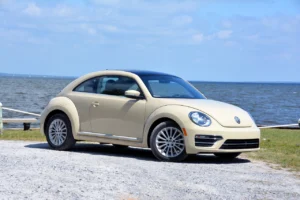
The Volkswagen Beetle has continued to thrive in contemporary culture, maintaining its status as an emblem of nostalgia and timeless design. Even after its production ceased in 2019, the Beetle remains a beloved and sought-after classic car. In order to preserve the memory of the original Beetle, many collectors make models of this car using EDM machines. Collectors and enthusiasts celebrate its enduring appeal, and the car continues to make appearances at car shows and rallies around the world. Much like the precision and attention to detail required in the creation of this beloved car, 3D scanning architecture employs advanced technology to capture intricate details in the world of design and construction
Furthermore, Beetle’s design legacy lives on in the automotive industry. Its influence is evident in the resurgence of retro-inspired cars with rounded, compact forms that harken back to the iconic design of the Beetle. Automakers, recognizing the enduring popularity of the Bug’s aesthetic, have incorporated elements of its design into modern vehicles, paying homage to a bygone era.
In the digital age, the Volkswagen Beetle has found new life on social media and in various online communities. Enthusiasts and fans share photos, stories, and memories of their Beetles, fostering a sense of camaraderie and nostalgia. The Beetle’s online presence ensures that its legacy continues to be celebrated and cherished by new generations.
Conclusion
In a journey that spans over half a century, the Volkswagen Beetle, affectionately known as the Love Bug, has cemented its place in the annals of pop culture history. The influence of the Beetle can be felt in several places, including fashion and wardrobe, where the trucker hats with the motif of this car can be especially highlighted. From its role in counterculture movements to its presence in music, advertising, and contemporary culture, the Beetle’s influence remains undeniably powerful and enduring.
This iconic car, with its enduring design, cinematic prominence, artistic representation, and multifaceted impact, has transcended its status as a simple automobile to become a symbol of innovation, freedom, and individuality. The Beetle’s cultural evolution and timeless charm ensure that it will continue to hold a special place in the collective heart and imagination, both today and in the years to come. Its journey is a testament to the enduring power of design, storytelling, and the capacity of a simple car to leave an indelible mark on the world of pop culture.

